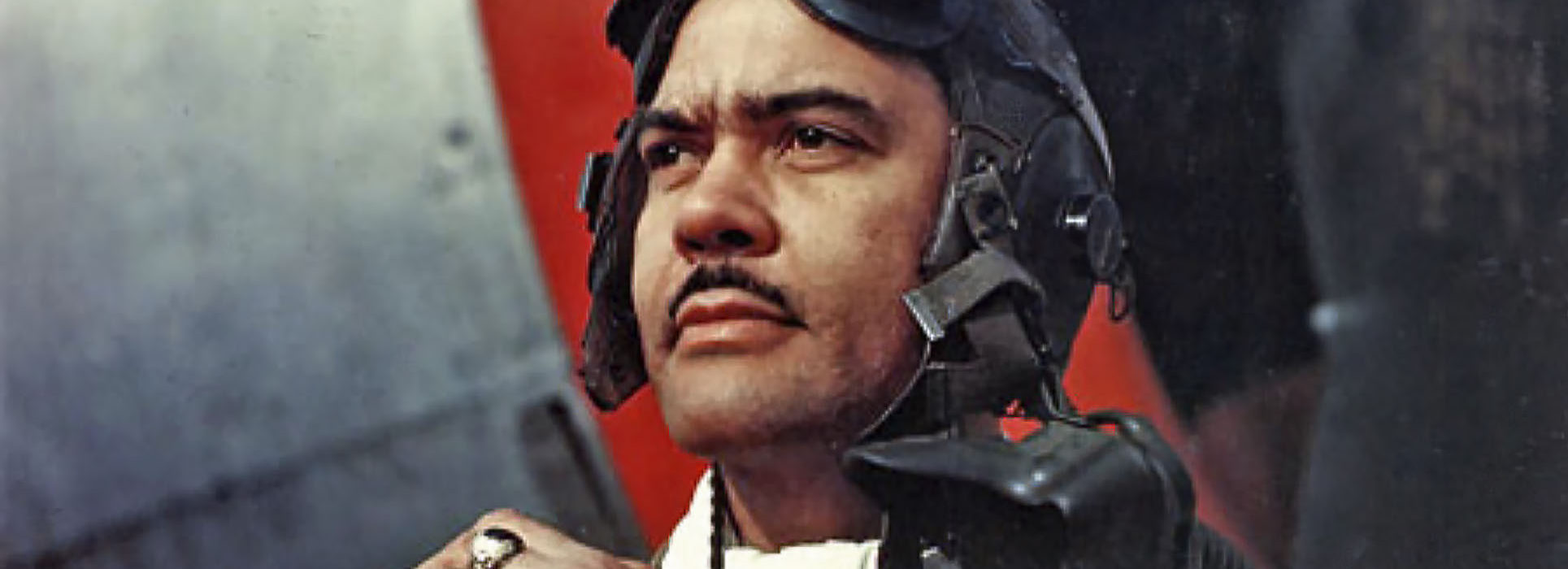From pilot training to fighter combat, Benjamin O. Davis
was the mainspring of the Tuskegee Airmen.
This article was originally published April 23, 2021.
When Benjamin O. Davis Jr., was commissioned at West Point in 1936, he became the second Black officer in the Army. The other was his father, Benjamin O. Davis Sr., promoted from the ranks in 1940 on sheer merit.
Racial segregation was deeply embedded. Davis had been appointed to the U.S. Military Academy by the only Black member of Congress, but the corps of cadets wanted nothing to do with him. He roomed alone, ate alone. Few classmates spoke to him outside the requirements of duty.
Davis applied for the Air Corps but it was not open to him. He served instead as an infantry officer. His opportunity came in 1941 when President Franklin D. Roosevelt ordered the War Department to create a “Negro pursuit squadron. Eventually, almost 1,100 Black airmen would train as fighter or bomber pilots at Tuskegee Army Airfield in central Alabama.
The first class at Tuskegee began in July 1941. Its most prominent member was Davis, by then a captain, who was designated commandant of cadets as an additional duty. He completed pilot training in March 1942 and was named commander of the all-Black air unit, the 99th Pursuit Squadron, when it was formed.
Lt. Col. Davis, 31, and the 99th Squadron—flying the Curtiss P-40 Warhawk—deployed for combat in April 1943. Operating from Tunisia and Sicily, they attacked enemy installations and escorted U.S. bombers threatened with danger of intercept by German fighters.
Davis returned to the United States in October 1943 to take command of a larger unit, the 332nd Fighter Group, which consisted of three Tuskegee squadrons equipped with P-39 Airacobras. The 99th was later folded into the group’s organizational structure. There was a Tuskegee-trained bomber unit as well, but it did not deploy to the war.
Meanwhile, the 99th came under criticism from opponents who said the Black pilots were ineffective and proposed an end to the Tuskegee “experiment.” Their attack failed, in large part due to information provided by Davis to the War Department. The critics lost further credibility in January 1944 when Black Airmen shot down 12 enemy fighters in two days. According to Davis, there was “no significant general difference” between performance of the 99th and other P-40 squadrons in the Mediterranean.
The 332nd arrived in Italy in February 1944 and was based at Ramitelli Airfield on the Adriatic coast. Shortly thereafter, Davis was promoted to colonel. The group upgraded to P-47 Thunderbolts and again to the P-51 Mustang.
The popular name, “Tuskegee Airmen,” first appeared in 1955. During the war, the Airmen were known as “Red Tails” from the markings and paint scheme of their aircraft, particularly the P-51.
The P-51s escorted heavy bombers on raids against targets deep in Germany, Austria, and other parts of central Europe. The total of wartime combat missions by Black pilots was 1,578. They shot down 112 enemy aircraft, including three Me-262 jet fighters, and destroyed another 150 airplanes on the ground.
A stubborn misbelief—originating in a Liberty Magazine article in 1945 and perpetuated for more than half a century by well-meaning supporters—was that the Tuskegee Airmen “never lost a bomber” to enemy fighters.
In fact, as analysis of daily mission records by Daniel H. Haulman of the Air Force Historical Research Agency has determined, 27 bombers were lost while under Tuskegee escort. That was still superior to other fighter groups in the theater, which lost an average of 46 bombers. The others, however, did better in some defensive categories, such as average number of enemy aircraft shot down.
The Tuskegee Airmen “were not worse, but they were also not better,” Haulman said. “In the long run, they proved to be about equal.” That was approximately what Davis said in 1943.
The Tuskegee experience was a factor in the Air Force announcement in April 1948 to “eliminate segregation,” making USAF the first service to announce a policy of racial integration. This was well before President Harry S. Truman’s executive order in July 1948 on equal opportunity in the armed forces.
Davis went on to command a fighter squadron in the Korean War and fly combat missions in the F-86 Sabre. During the Vietnam War, he was commander of 13th Air Force in the Philippines.
John T. Correll died April 5 (see p. 32). This is among the last pieces he wrote for publication. The remainder will be published in the coming months.


